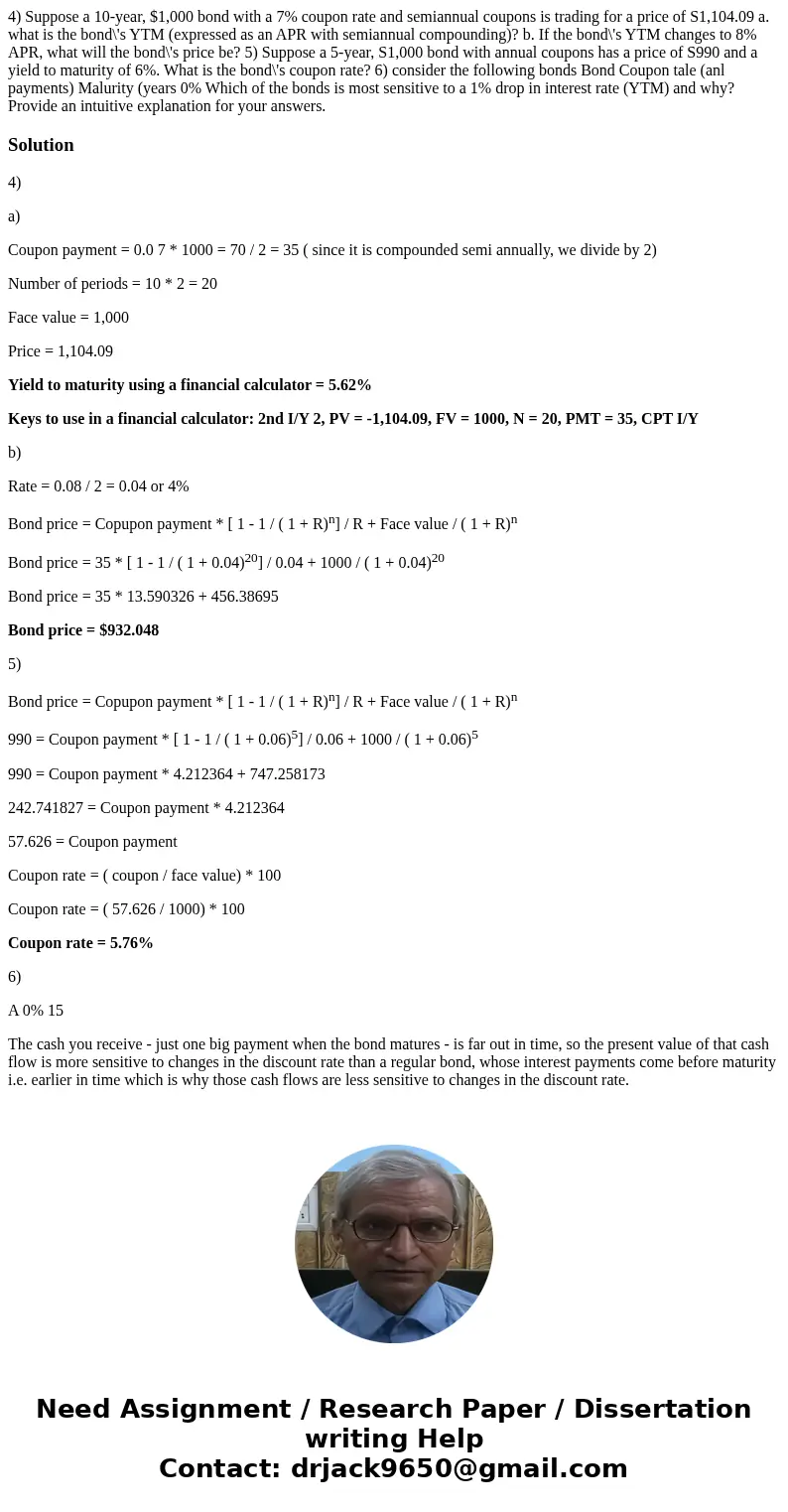4 Suppose a 10year 1000 bond with a 7 coupon rate and semian
Solution
4)
a)
Coupon payment = 0.0 7 * 1000 = 70 / 2 = 35 ( since it is compounded semi annually, we divide by 2)
Number of periods = 10 * 2 = 20
Face value = 1,000
Price = 1,104.09
Yield to maturity using a financial calculator = 5.62%
Keys to use in a financial calculator: 2nd I/Y 2, PV = -1,104.09, FV = 1000, N = 20, PMT = 35, CPT I/Y
b)
Rate = 0.08 / 2 = 0.04 or 4%
Bond price = Copupon payment * [ 1 - 1 / ( 1 + R)n] / R + Face value / ( 1 + R)n
Bond price = 35 * [ 1 - 1 / ( 1 + 0.04)20] / 0.04 + 1000 / ( 1 + 0.04)20
Bond price = 35 * 13.590326 + 456.38695
Bond price = $932.048
5)
Bond price = Copupon payment * [ 1 - 1 / ( 1 + R)n] / R + Face value / ( 1 + R)n
990 = Coupon payment * [ 1 - 1 / ( 1 + 0.06)5] / 0.06 + 1000 / ( 1 + 0.06)5
990 = Coupon payment * 4.212364 + 747.258173
242.741827 = Coupon payment * 4.212364
57.626 = Coupon payment
Coupon rate = ( coupon / face value) * 100
Coupon rate = ( 57.626 / 1000) * 100
Coupon rate = 5.76%
6)
A 0% 15
The cash you receive - just one big payment when the bond matures - is far out in time, so the present value of that cash flow is more sensitive to changes in the discount rate than a regular bond, whose interest payments come before maturity i.e. earlier in time which is why those cash flows are less sensitive to changes in the discount rate.

 Homework Sourse
Homework Sourse